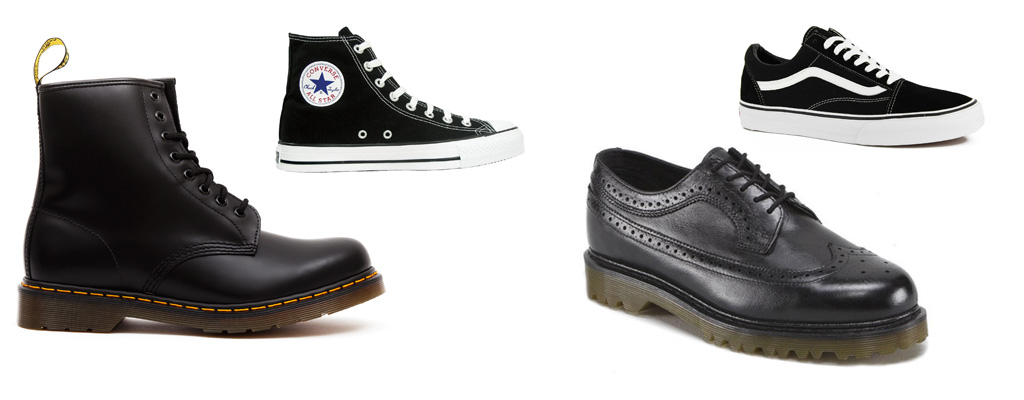Shoes, snickers and subcultures
Why do we have dress codes? What does the CASUAL FRIDAY mean? Is it appropriate to go to a business meeting, weeding, and theater – wearing bunny slippers? What about…sneakers, piercing, tattoos, leather jackets, spiked hair, jersey?

Social implications of personal wardrobe, footwear and accessories are vast; but the common denominator for all subcultures is specific fashion if not the whole lifestyle, alongside core beliefs, music choices, and interests.
Lifestyle is a way to tell a story about ourselves to literally anyone who is willing to look at us. Clothes and accessories we choose are important parts of the image we create of ourselves for ourselves and the rest of the world.
Certain parts of clothing bear more significance than others. Skirts or pants? Pants or jeans? Shoes or sneakers? Purse or backpack? We use clothing to assert our position in our society. We strive to send a message that is appropriate (or inappropriate) for every occasion. But few items have the cultural value that shoes have.
Footwear as class and social marker
Footwear has been class and social marker throughout the history. For example: through the middle ages red shoes were a cardinal privilege, meaning only cardinals of the Catholic church were allowed to wear them. Flip flops have been portrayed on some murals In Egypt dating as far as 4000 years BC History of a shoe is filled with amazing controversy, because it has been a status symbol for almost a millennia.
Sneaker, for example, is a late 19th century product, made by men for men, strongly associated with principles of masculinity through sport. Even today, we can witness that sneakers are attribute if masculinity: marketing ads for major sport equipment show this quite clearly, not only by sorting male from female models, but by addressing men dominantly.
In contemporary culture, footwear can be roughly divided in two major categories: formal and informal. Formal footwear is broadly represented by shoes, and this is why shoes are an important part of many dress codes, especially work-related. On the other side is informal footwear – sneakers, in a nutshell.
The only question is if we chose our shoes, or are they chosen for us in advance? Marketing witchdoctors don’t sell individual products to individual persons. They sell a lifestyle appealing to broad social groups. They sell THE MESSAGE you want to represent yourself in eyes of superiors or peers: the first sentence on history of Dr. Martins shoes quotes: “The history of subculture is a chronicle of being different” thus establishing a mass-produced shoe as a differentiating quality among same social class.
The important topic here is how globalization and world trends are influencing the global society. How is it that a particular model of a shoe gets infused with meaning, becoming a status symbol? And how that particular model transforms and changes its marker from a subculture or counterculture to mainstream, thus loosing its core meaning.
In other words: how come Converse ALL STARS gained and lost its social meaning? How come Michael Jordan made it to the Forbes list of the wealthiest men? Why RUN DMC would have a song titled MY ADIDAS?
And who chose the sneakers that you wear?

